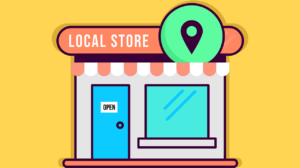My steadfast conviction lies in the transformative potential of community, the core function of social media itself – uniting individuals, shaping norms, and ultimately molding behavior. If change is to be realized, it must echo and resonate through the channels of social media. On social media, everyone has a voice, and everyone’s voice is heard.
It poses the question – what role will social media play in driving sustainability behaviour on a mass scale to drive the green transition?
Currently, social media is primarily used for keeping in touch with family and friends, filling spare time, and reading the news, but it can be used for so much more. The focus is already shifting to using it as a tool to raise awareness, mobilize support, and advocate for change. Research conducted by Unilever, the Behavioural Insights Team (BIT) and a group of nine influential creators from TikTok and Instagram, has discovered social media has more of an influence on sustainable behavior than news, TV documentaries, and governmental campaigns.
One study published in the journal Environmental Science & Technology revealed that social media posts containing climate content are more likely to generate engagement and be reshared, which ultimately increases awareness of sustainability-related issues. Another study published in a sustainability journal shared that social media has the potential to support the achievement of the United Nations’ Sustainable Development Goals (SDGs) by offering a universal platform for sharing ideas, best practices, and insights concerning the environmental crisis.
Social media is used every single day by billions of people across the globe. These platforms present a real opportunity to promote sustainability and sustainable behavior. Harnessing this unique power, individuals and businesses can generate collective impact, helping to secure a greener future. So, how can social media be a game changer for sustainability?
The answer is creating, together with early adopters, a social media platform which would be the driver for a paradigm change. Our early adopters are sustainable, curious, and sustainable enthusiasts who shape the community and actions and create the socially contagious effect of good actions. We are already seeing marketing making the switch to responsible marketing or marketing 2.0 based on empathy and more influencers advocating for important causes.
The same transformation can be seen in the digital world with social media. Users spend, on average, over 2 hours on social media each day, looking for meaning. They need to use this time to search for collaborative purposes instead. When used correctly, social media can help us better understand issues concerning the climate crisis and find ways to make a difference. There are many ways we can use social media as a platform for good to achieve the society we envision.
It can help us achieve a sustainable world through its opportunity to raise awareness and mobilize support. On social media, users can use their voices and share their thoughts. Through this, they can inspire others and encourage them to venture into a greener lifestyle. Social media can be utilised as an educational resource to teach people about the importance of tackling climate change and how to make more sustainable choices.
Social media can be a beneficial resource in making people aware of sustainable products and encouraging eco-conscious behavior. Through social media, businesses and individuals can also share their success stories, which shows others that the journey is achievable and that they can make waves too. Collaboration is essential in the fight against climate change, and social media facilitates worldwide collaboration. It brings together people from all different walks of life from all around the world.
Users can use these platforms to share ideas, resources, and knowledge, joining forces to drive even more positive change. We have already seen the power of social media for advocacy, with hashtags acting as powerful instruments for activists, bringing important movements to the forefront: #MeToo, #BlackLivesMatter, #SmallStepsBigDifference, and so much more. We have also witnessed social media being used as a tool to amplify crucial causes.
Challenges like the Ice Bucket Challenge for ASL or Movember have attracted millions of partnerships, establishing further support around the causes. These are prime examples of viral altruism, which supports the rapid and monumental spreading of social norms, trends, and information. The four ingredients to build on viral altruism are social influence, affective reactions, meaningful engagement and constant moral elevation.
Through these elements, we can translate social momentum into sustained real-world contributions. On social media, brands are told to post content that falls under SMART dimensions. Dr Sander Van der Linden argued in 2017 that social issues like climate change score very low across these dimensions. Social norms surrounding climate change are not very well pronounced in that most do not see it as a moral issue. Rather, they typically view climate change as a psychologically abstract and distant issue.
To explore social media’s true potential for driving the sustainable transition, however, we need a platform that practices what it preaches. We need a platform specifically for sustainability that is also driven to enable users to scroll with impact. While topics like climate change are certainly brought over to traditional social media platforms, this is not enough. A sustainability-focused platform would facilitate those important discussions while also educating and raising awareness.
Social media platforms should do more than raise awareness though. We need to close the loop by pointing users to things they can do to live more sustainably. This is where behavior tracking, like using a lifestyle carbon calculator to assess your carbon footprint can be a real game changer. A carbon calculator assesses the environmental impact of one’s lifestyle, exposing impact blind spots so they can make informed decisions concerning sustainability.
By sharing small actions towards sustainable living on social media, we can motivate other people and organizations to follow suit. Social media users are ready to use social platforms as impact hubs and have already started doing this. We have seen this shift with the arrival of Facebook applications like “I am Green”, which garnered over 2 million members. This initiative allowed users to display their environmental attitude as a badge on their own social media profiles.
The time for purpose-driven businesses and organizations to use social media platforms to speak to receptive audiences and inspire change is now. Social media can be harnessed as a disruptive force to amass support around sustainable living. As Actor and Environmentalist Leonardo Di Caprio said: “Climate change is the most urgent threat facing our entire species, and we need to work collectively together.” Social media is that space that will allow us to raise awareness, collaborate, and inspire each other on the road to change. On social media, the voice of one person can reach billions of people, and it has become a powerful weapon for social and environmental change that can ignite the climate movement. In the race to net zero, the time to use such a weapon to save the planet and leave behind a better world for future generations is now.





